Application and practice of large area projection technology
ã€Abstract】 Through the case introduction, the problems encountered in the practice of large-area projection have been comprehensively analyzed.
ã€Key words】 Projector laminated stitching imaging
introduction
In the large-scale performances of the past, due to the huge size of the venue, dozens or hundreds of people seemed small. More often we need to use sea tactics and large props to ensure the performance. Under the principle of thrift, it is not advisable in terms of time, capital, personnel, etc. Only by fully utilizing high-tech means such as large-area projection on the ground can we save money, personnel and time. Since the 2008 Olympic Games, projectors have been widely used in large-scale events. Using the means of projection, not only can the picture bring people space fantasy, but also realize unlimited creativity, which is the effect that the previous sea tactics and large props can't achieve. Below, the author is here to share with you the technical application of the video projection part of various large-scale events that have been experienced.
First, the projector development is brief
The previous projection is around 10,000-20000 lm. When the ambient light intensity and the erection angle are not ideal, the brightness of the small lumen projection is insufficient or the light loss rate is high, which affects the effects of viewing, recording, and photographing. With the development of projector technology, the digital projection power is greatly improved. The center brightness of non-laser projectors can reach 35,000 lm and the resolution reaches 4K. The increase in brightness and resolution gives us great convenience in use. Not only is the picture more clear and beautiful, but the number of installations is also reduced. However, because the projector is too large, the difficulty of installation increases. At the same time, the projector's single high-resolution output, the high total resolution of the screen in large events also brings higher requirements for the playback system and backup system.
Below, use some examples to introduce our solutions for different projects.
Second, the projection case
1) Eastern OCT
In 2010, we first tried indoor circular projection (360 degree wall surface) project in OCT East. The total material width of the project exceeds 1w resolution. This is a multi-purpose hall, 360-degree projection can bring you the overall atmosphere.

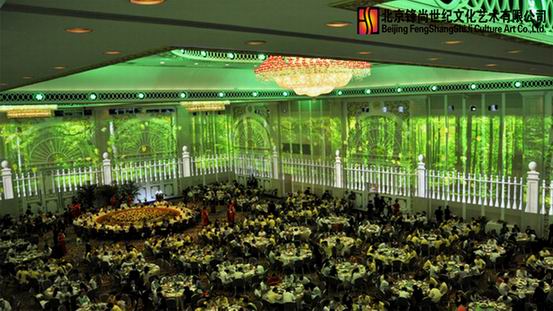
Above: Eastern Overseas Chinese Town Below: Multi-functional Ballroom
2) Tsinghua University Centennial Celebration
In 2011, during the Tsinghua Centennial Celebration, we installed and commissioned the first large-area wall projection project in China. Through the implementation of this project, we have taken the next step in technical design, installation, commissioning, and the combination of picture and building.

Tsinghua Centennial Celebration Staircase Projection
3) Li Guyi’s 50th Anniversary Concert
In 2012, Li Guyi’s 50th Anniversary Concert was an in-depth collaboration with the Spanish team. The beauty design is also the first time in the country to use the full projection stage, and it is a full arc stage. At the same time, it fully embodies the concept that the lighting and video are the visual effects of the stage, coordinate with each other, the stage effect is clean, the picture is full, and the video effect is excellent.
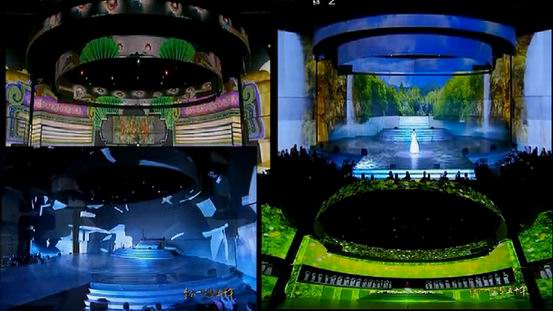
4) Shanghai series
Since 2011, we have done a series of projection activities in this western and avant-garde city of Shanghai.
The Shanghai 2011 New Year's Light Show is the largest activity in the Asian building's coherent screen area. After 2 field tests and measurements, the position is designed according to the terrain and local policies. At the end of December, the temperature in Shanghai was low, and the activities on the Huangpu River were very humid. Not only the protection of the machine should be strengthened, but also the safety measures such as rainproof and windproof of the equipment tower should be done in place. The project used 24 sets of Christie 35000lm projectors and 8 sets of 20000lm projectors. The number of projectors is large, and the playback system is huge, but for security reasons, we still have a one-to-one playback backup.
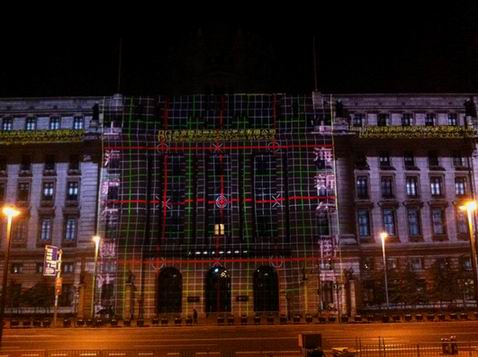
Shanghai Bund Cross-Year Stair Projection, during commissioning
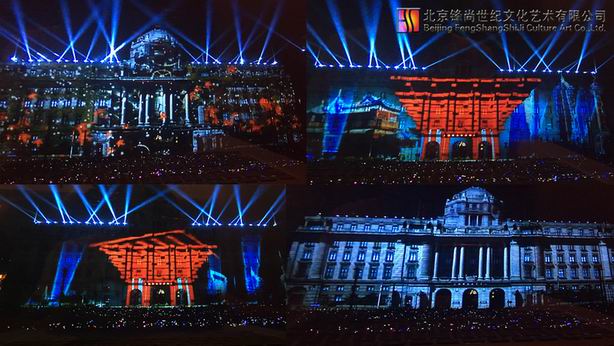
Shanghai Bund Cross-year Stair Projection
After the first installation of the step projection in the Shanghai Art Palace in Shanghai, the step imaging carrier is not particularly ideal and can only be viewed at an angle. At the same time, the mapping here is completely different from the ordinary building wall. In the end, with the joint efforts of our company's video and video department, through the mapping and material misplacement, we finally satisfied the creative needs of the performance, and made the Chinese Art Palace's main building, performance and image close together, and the performance was perfectly presented.

Shanghai Chinese Art Palace
The opening ceremony of the Shanghai World Swimming Championships is very interesting. We follow the various ideas of the creative group to modify the projection position while installing, and add it at any time. We really like the feeling of this - constantly changing, for better results. Because it is a underwater projection, and at the same time it has to interact with the contents of the barrel yarn and the strip screen, there are many factors to be considered in the case of various projection media. Water refraction, mapping, audience location placement design, dual system dual backup design, etc., we solved one by one, and finally met the director's requirements, successfully completed the live broadcast work.
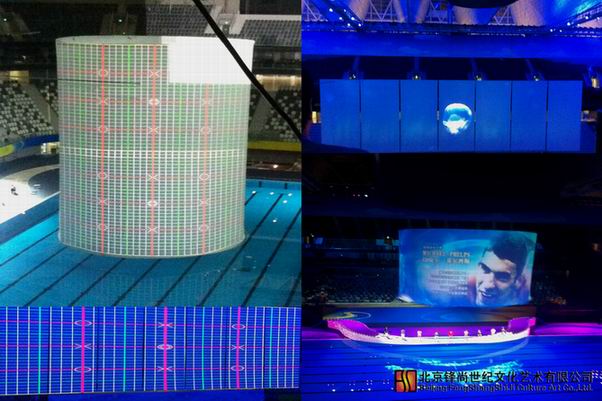
Shanghai World Swimming Championships
The 2015 Shanghai Figure Skating World Championships conducted an ice projection project. Based on our experience in previous swimming tournaments, we have made the project even more effective.
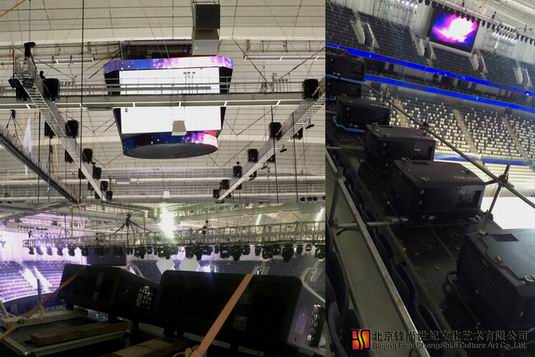
Shanghai Figure Skating World Championships, during installation
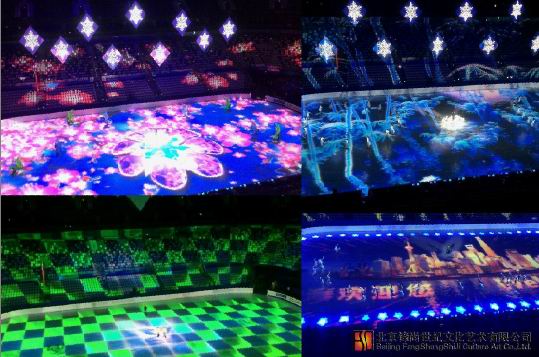
Shanghai Figure Skating World Championships
5) Beijing spirit
In 2012, the 7.5m wide holographic projection film, 30m wide 3D metal giant screen, more than 2,000 viewers, and a wide range of audiences prompted us to practice large-area 3D projection for the first time. The research of 3D projection screen, the study of polarization, the study of how the material "ghost" is eliminated, the effect of light passing through the polarization of the polarizer and the lens on the brightness, and so on. These problems not only give us new challenges, but also give us new directions and opportunities for the application of projection in different environments.
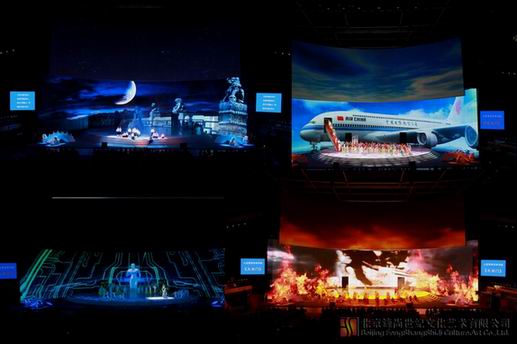
Beijing spirit
Third, the Youth Olympics projection analysis
The effective picture length of the ground projection imaging of the Nanjing Youth Olympic Games is 138 meters wide and 78 meters wide. Due to the innovative design concept, the imaging size of the ground projection is beyond the maximum volume ever made in China. After several actual field simulation projection tests, the conclusion is that the maximum projection angle of the projector and the shadow carrier should not exceed 35 degrees, and the shortest projection distance is greater than 120m. This is in contrast to conventional projector projections. A smaller projection angle and a longer projection distance mean that the image brightness per unit area is lost a lot, and the projected image is more deformed.
Considering that the relevant domestic technology is not mature, the complexity of subsequent production and technical debugging, the project team went to the Nanjing Olympic Sports Center for on-the-spot investigation, and the physical structure limitation of the venue did bring great challenges to the design work. With reference to these conclusions, the projection video group gave the initial design: using 112 26000 lm HD projectors, splicing and imaging with 7 sets of projectors on the lateral 138 m, and splicing and imaging with 4 sets of projectors on the vertical 78 m. The imaging screen of the projector is 26.5m*22.5m (including the fusion zone). The full-frame picture is based on the combination of the 7*4 mode and the splicing of the 1-layer picture, and then the 4-layer picture superimposition correction. In order to shorten the projection distance of the projector as much as possible, 112 projectors were divided into 56 units at the highest position of the east side viewing stand and 56 units corresponding to the west side stand. Each side consists of 14 projectors to form half of the image, and a total of 28 complete a full-frame image as a unit of physical alignment.

Nanjing Youth Olympic Games - Projection System Design V1
According to the plan, the correction and splicing of the first layer of 7*4 full-frame pictures were completed. During the debugging, we found unexpected reflective problems, and the debugging work had to be suspended. Projection imaging is different from the self-luminous imaging principle of LED screens. It is necessary to balance the physical properties of the stage imaging medium on the properties and basic properties of the projected light of the projector, and minimize the light loss of the imaging surface so that the effect of the imaging surface is in a limited space. Get the maximum expression, in order not to delay the advancement of follow-up work.
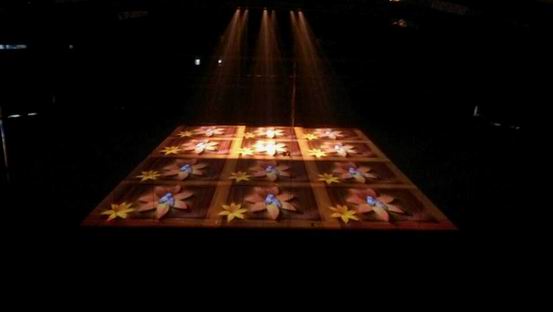
Nanjing Youth Olympic Games - projection system test
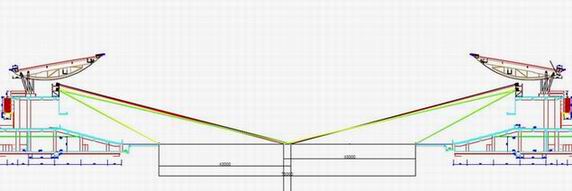
Nanjing Youth Olympic Games - projector position design V1
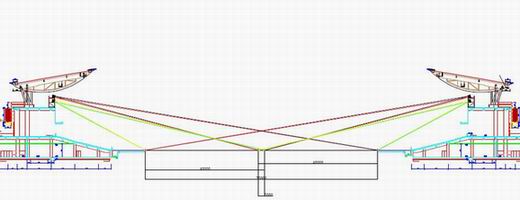
Nanjing Youth Olympic Games - projector position design V2
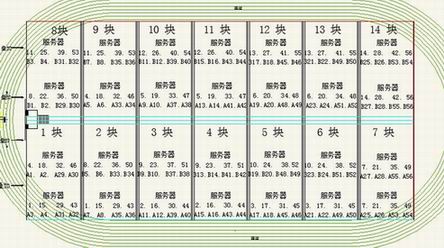
Nanjing Youth Olympic Games - Projection System Design V2
In the original 7*4 splicing and superimposing 4-layer scheme, 7*2 splicing and superimposing 8 layers, each side of the unit area is projected and superimposed with 4 layers, and the method of symmetric projection on both sides is adopted. Thereby effectively solving the problem of uneven brightness of the spliced ​​full-frame picture, so that the projected picture will be repeatedly superimposed with 8 layers. This is absolutely unprecedented in the international peers, and this difficulty brings an unprecedented amount of work to the correction and splicing work.
In order to meet the high-definition broadcast of the TV, each grid coordinate line corresponding to the superimposed 8-layer picture must be completely coincident. In order to meet this requirement, the Barco projector and the video server are both corrected in the debugging process. First, use the Warp correction function of the projector to first adjust the stacking of each of the 112 Barco projectors one by one, and then use the multi-point correction function of the video server to fine-tune the coordinate point-to-point, and each grid line in the 138m*78m area Move fine to the pixel.
Since each projector is projected to the ground at a distance of 120m, as long as the projector body or lens has a movement of 1cm, it will affect the clarity of the ground image beyond 120m. Affected by irresistible external factors, the phenomenon of screen movement occurs every day, which affects the progress of the work. In order to ensure the clarity of the picture, the staff will reset the picture every day. In order to be able to catch up with all the actors on the specified date, the projection video team took turns to watch, the wind and rain, day and night work, so that all the actors on schedule.
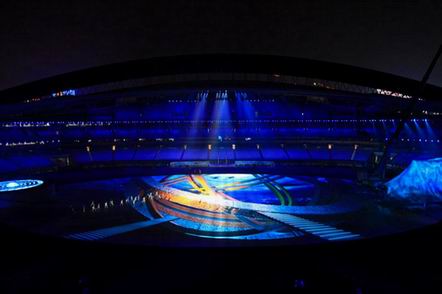
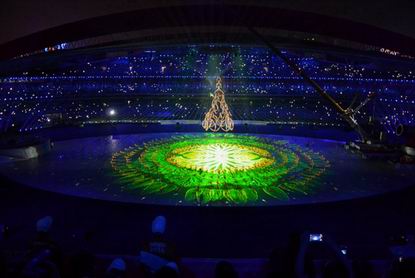
Nanjing Youth Olympic Games
Conclusion
Faced with the problems encountered in large-area projection application technology, we have continuously explored, researched, summarized, and gained a lot of valuable experience. Looking forward to the needs of technological development and creativity, in order to meet the requirements of the audience's aesthetic appeal, we must continue to improve the technical level and do the best "tools" in the hands of the creative department.
510 Thread Cartridge,Battery Pen 510,Rechargeable Cbd Battery,Adjustable Voltage 510 Battery
ALD GROUP LIMITED , https://www.aldvapor.com